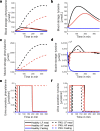A dynamic multi-tissue model to study human metabolism
- PMID: 33483512
- PMCID: PMC7822846
- DOI: 10.1038/s41540-020-00159-1
A dynamic multi-tissue model to study human metabolism
Abstract
Metabolic modeling enables the study of human metabolism in healthy and in diseased conditions, e.g., the prediction of new drug targets and biomarkers for metabolic diseases. To accurately describe blood and urine metabolite dynamics, the integration of multiple metabolically active tissues is necessary. We developed a dynamic multi-tissue model, which recapitulates key properties of human metabolism at the molecular and physiological level based on the integration of transcriptomics data. It enables the simulation of the dynamics of intra-cellular and extra-cellular metabolites at the genome scale. The predictive capacity of the model is shown through the accurate simulation of different healthy conditions (i.e., during fasting, while consuming meals or during exercise), and the prediction of biomarkers for a set of Inborn Errors of Metabolism with a precision of 83%. This novel approach is useful to prioritize new biomarkers for many metabolic diseases, as well as for the integration of various types of personal omics data, towards the personalized analysis of blood and urine metabolites.
Conflict of interest statement
The authors declare no competing interests.
Figures





References
Publication types
MeSH terms
Substances
LinkOut - more resources
Full Text Sources
Other Literature Sources

